April 22 is the Earth Day. On this day, various events are held around the world to remind people that their survival directly depends on the state of our planet.
Commemorating the Earth Day, The Universe Space Tech editorial team has prepared a selection of the most iconic images of the Earth from space. They clearly demonstrate how fragile and lonely our home looks in the middle of the vast expanse of cold and dark space.
Earthrise
On December 24, 1968, the Apollo 8 spacecraft entered orbit around the Moon. During one of its orbits, astronaut William Anders took one of the most famous and influential photographs of the 20th century. It shows the Earth rising over the lunar surface.
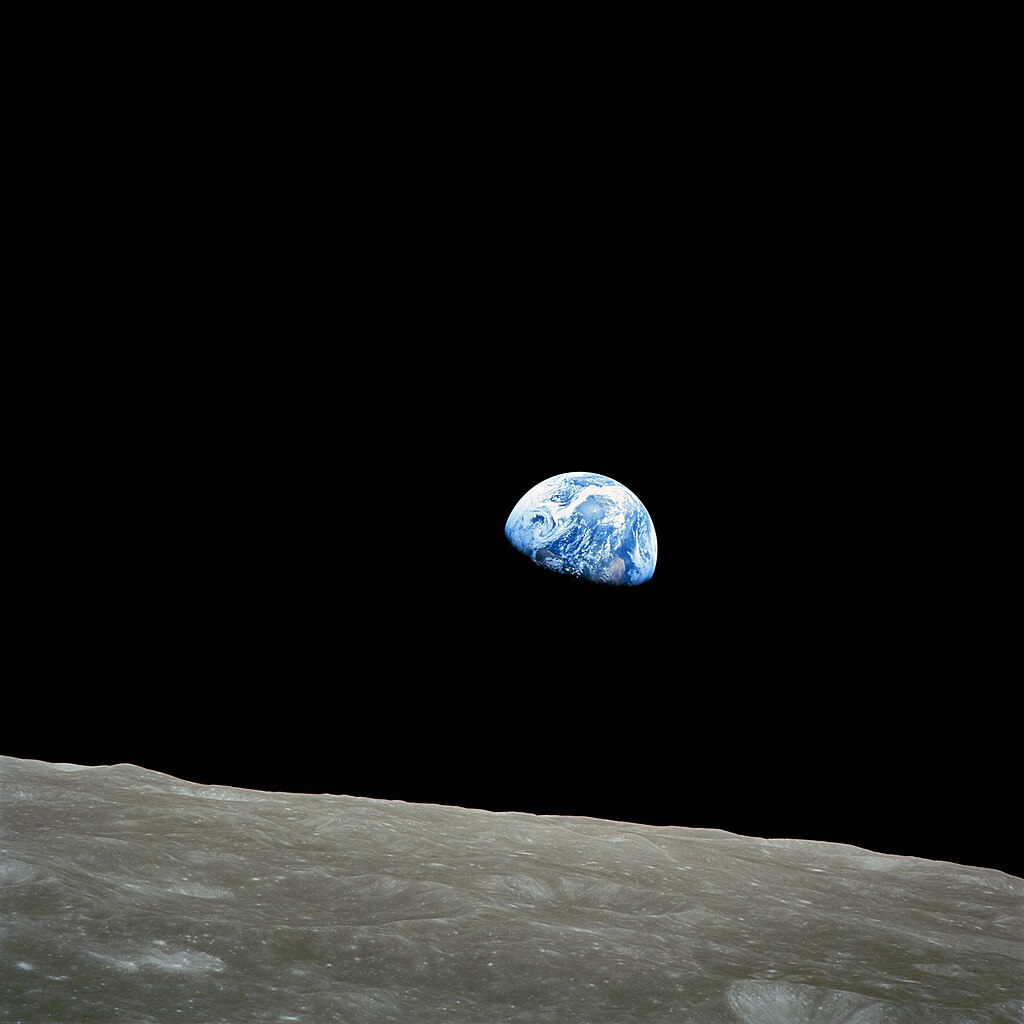
Earthrise over the Moon. The photo was taken by the crew of the Apollo 8 mission. Source: NASA
In the following years, many expeditions and automated vehicles tried to repeat the magic of this moment by taking similar images. One of the most successful was the image captured by the LRO on October 12, 2015.
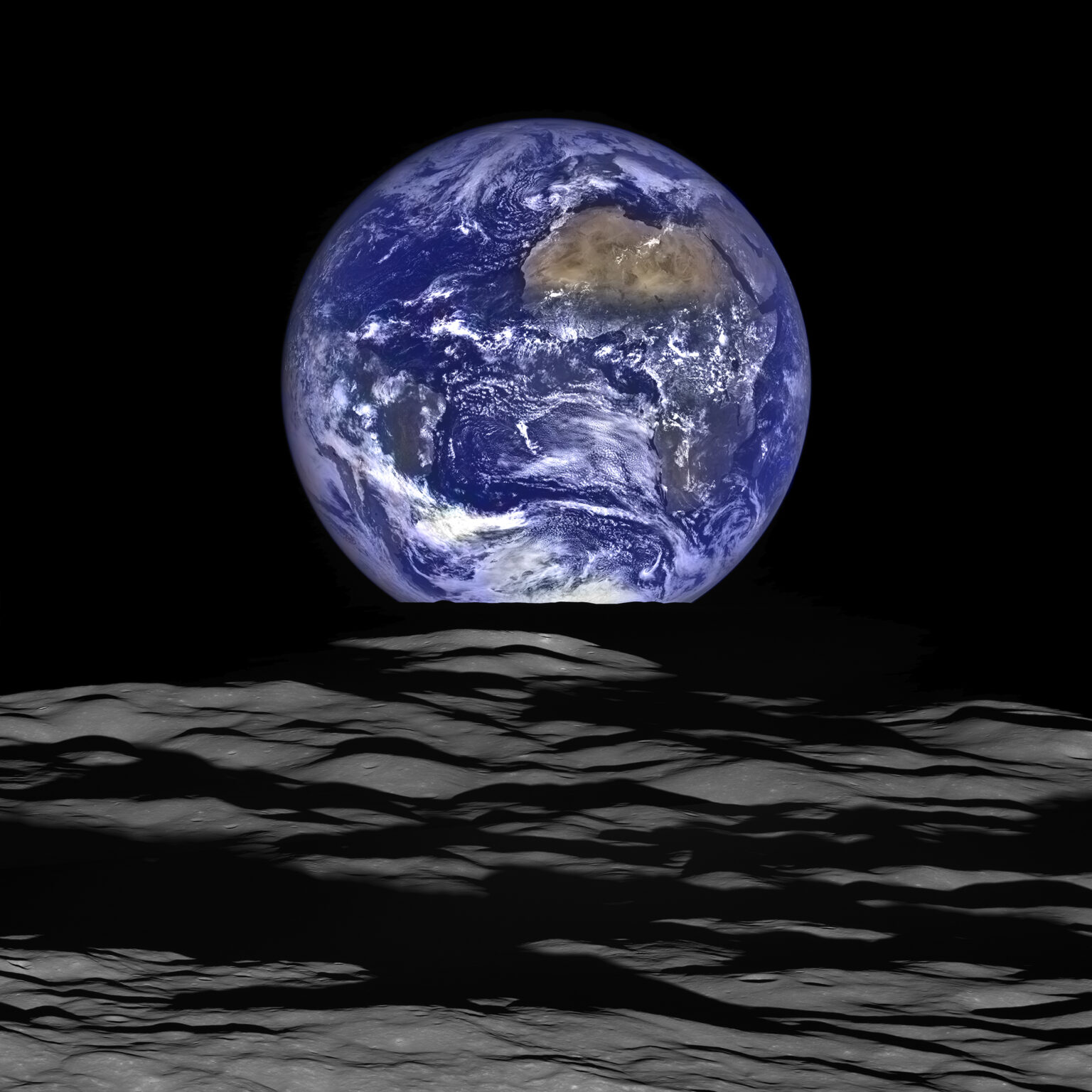
Earthrise over the Moon as seen by the LRO. Source: NASA/Goddard/Arizona State University
Blue Marble.
The astronauts who flew to the Moon made another iconic photo of our planet, which may well be equal in popularity to the Earthrise. This is the “Blue Marble” photograph taken on December 7, 1972 by the crew of the Apollo 17 spacecraft, which shows the Earth fully illuminated.
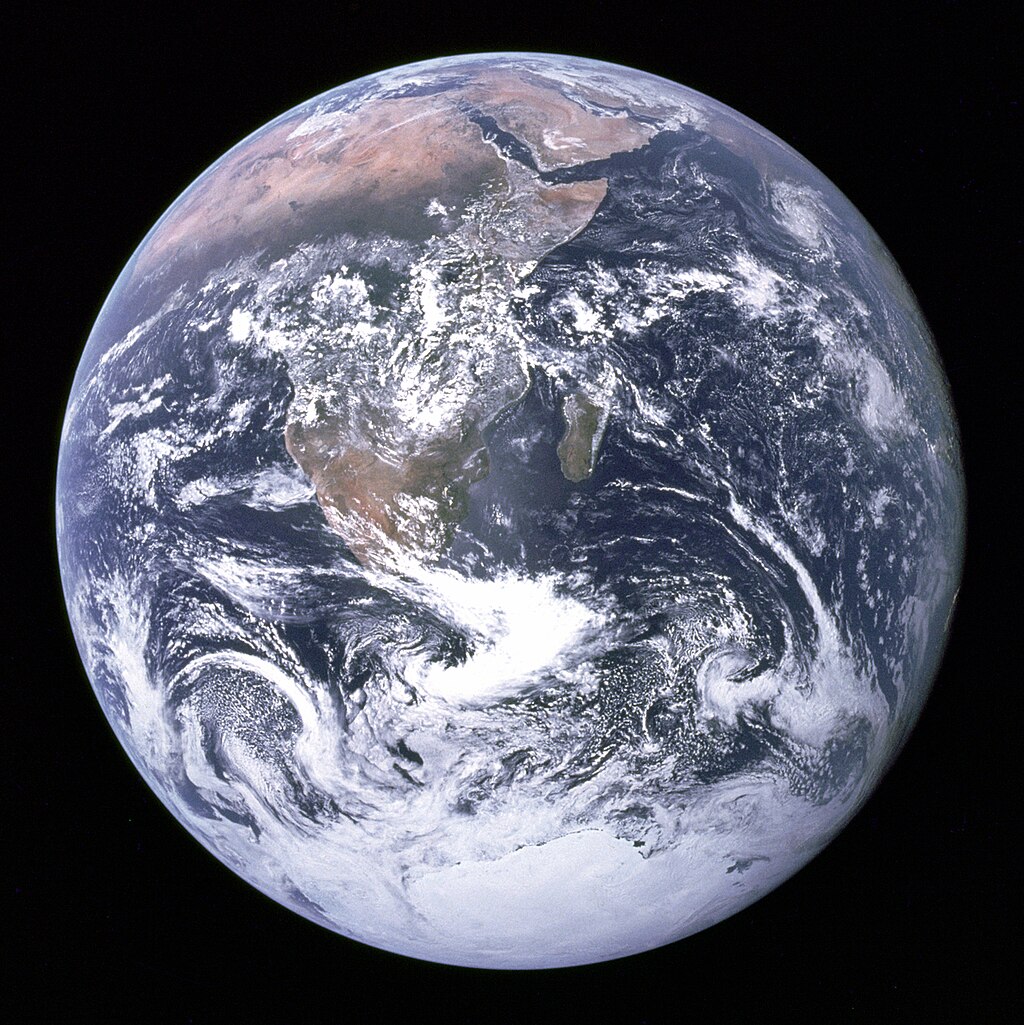
“Blue Marble” Photo. Source: NASA
Later, this photo was actively used in many books and various campaigns to visualize the view of our planet from space. In 2012, NASA also remade it. However, unlike the original, the new version of the “Blue Marble” is not a single image, but a combination of images composed of many separate satellite photos.
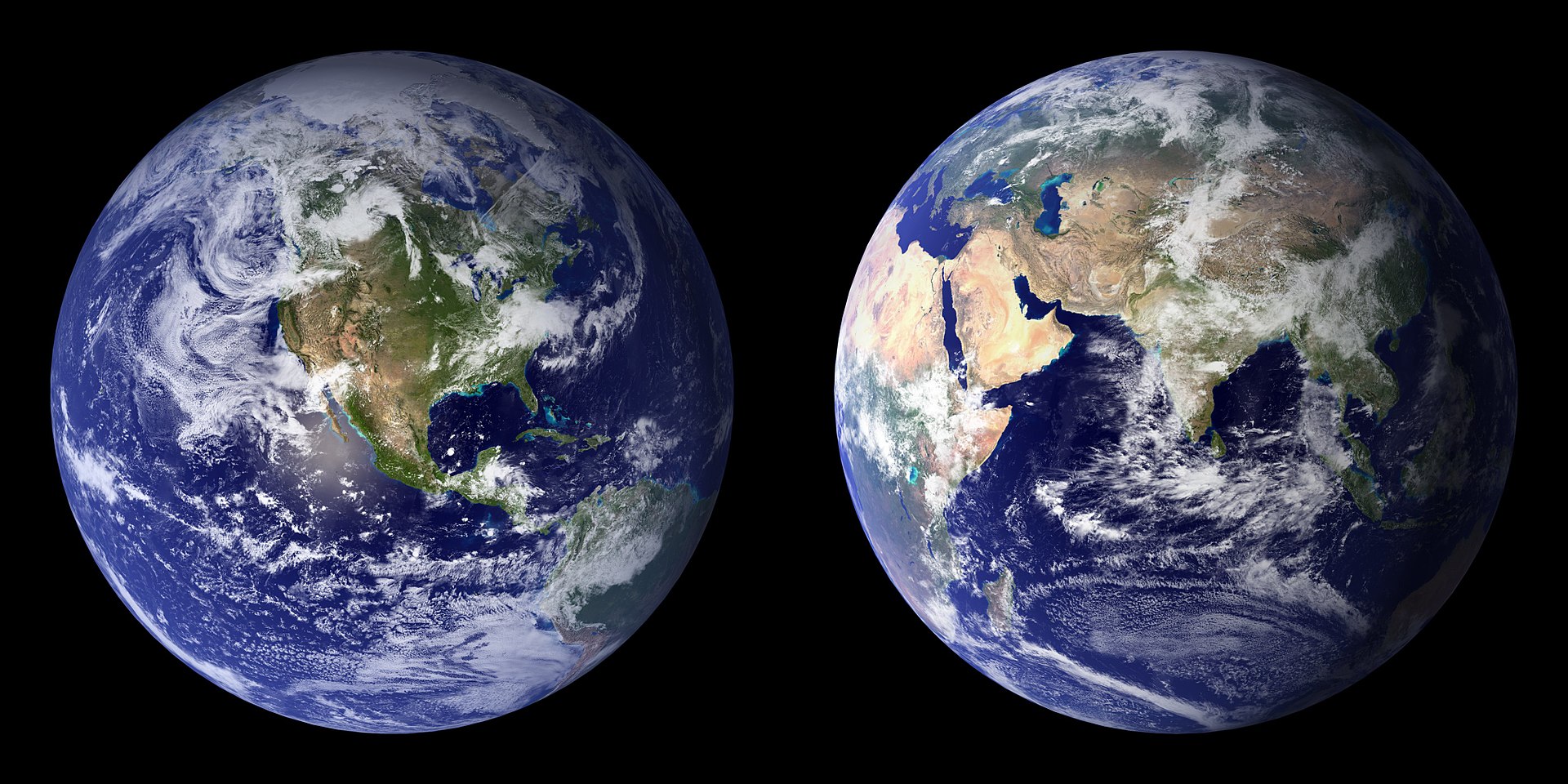
A modern version of the “Blue Marble” image. Source: NASA Goddard Space Flight Center
Such different worlds
Our Earth is impossible to imagine without its faithful companion, the Moon. On July 16, 2015, the DSCOVR satellite, which is located at the Lagrange point L1, captured the transit of the Moon across the Earth’s disk for the first time in history.
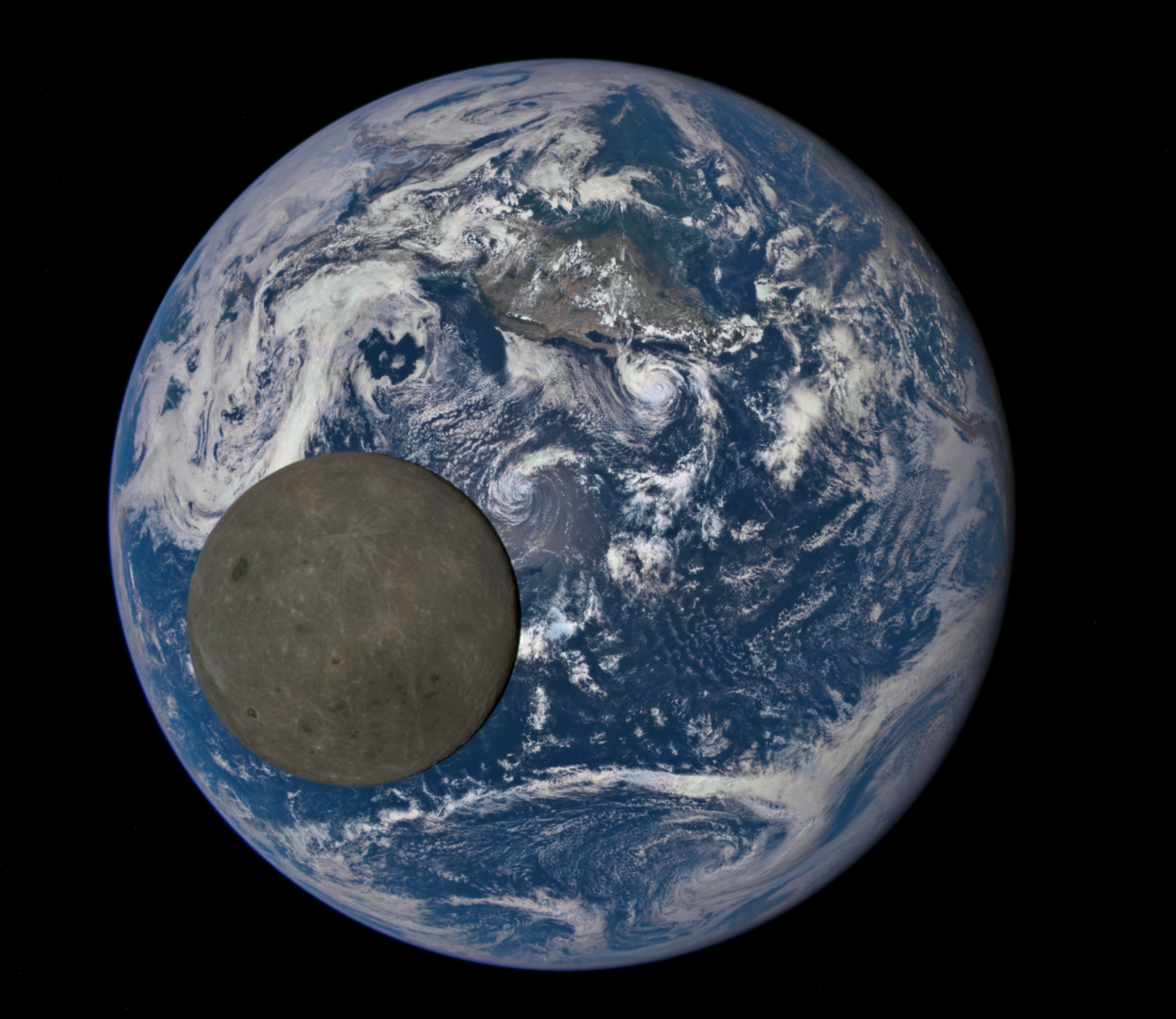
The transit of the Moon against the background of the Earth. Source: NASA/NOAA
The image is interesting not only for the fact it was the first of this kind, but also because it clearly demonstrates how different the Moon is from its neighbor. It is not only much smaller, but also much darker. The lunar surface reflects about three times less light than the surface of our planet.
The day the Earth smiled
On July 19, 2013, the Cassini spacecraft, which explored Saturn, captured an epic portrait of Saturn as the planet blocked the Sun.
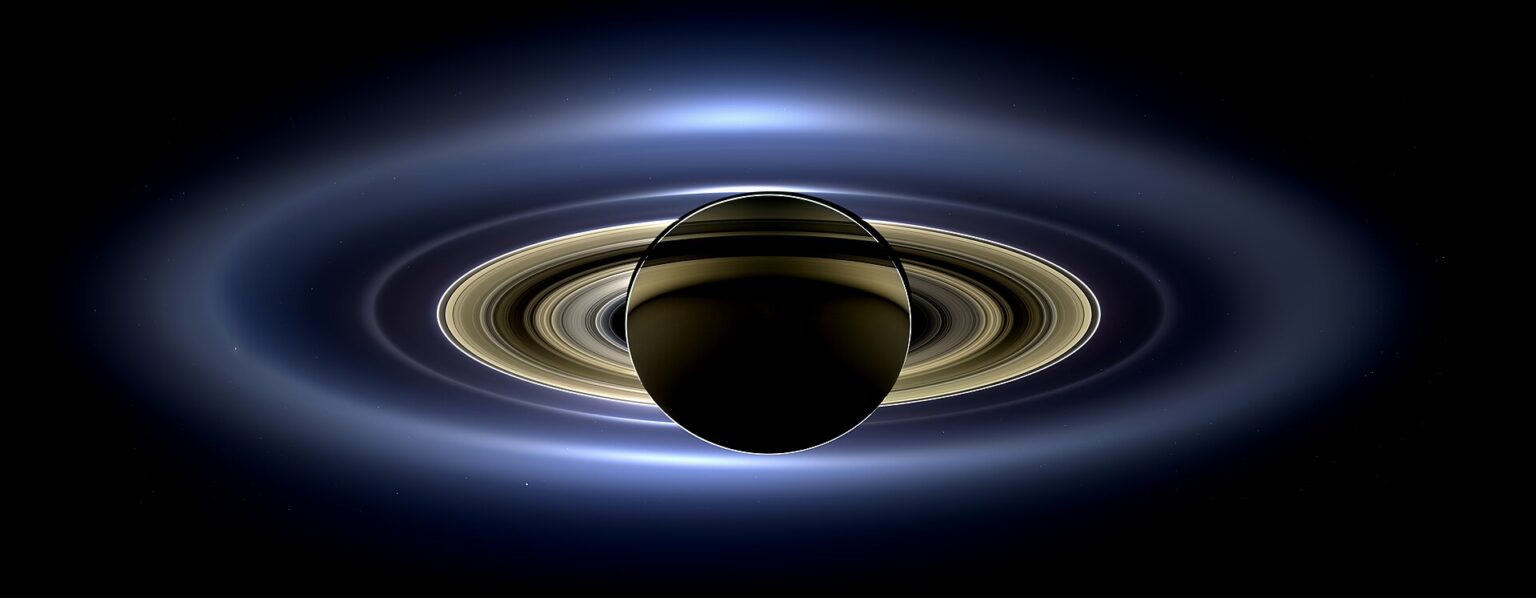
A panorama of Saturn taken by the Cassini spacecraft on July 19, 2013. Source: NASA/JPL-Caltech/SS
In addition to the gas giant itself and the magnificent rings surrounding the planet, the image shows a number of its satellites, as well as a characteristic blue speck. This is our Earth. At the time of the image, Cassini was at a distance of 1.44 billion kilometers from it.
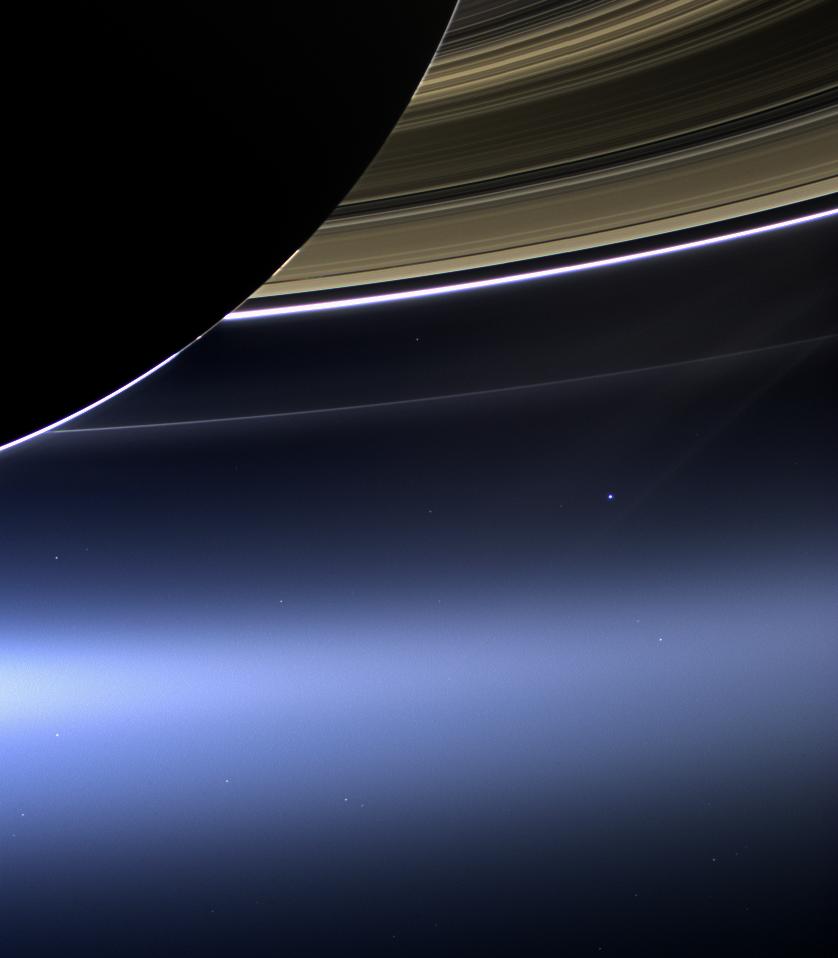
The Earth (bright blue dot) in the Cassini image. Source: NASA/JPL-Caltech/SS
A pale blue speck
Most astronomy and space fans have probably heard the phrase Pale Blue Dot. This is one of the most famous photographs of our planet in history. It was taken in 1990 by the Voyager 1 spacecraft from a distance of 6 billion kilometers, which is still a record. No other earthly messenger has ever taken pictures of our planet from a greater distance.

Photo by Pale Blue Dot (updated version). Source: NASA
In his book “Pale Blue Dot: A Vision of the Human Future in Space,” Carl Sagan commented on this photo:
“Look again at that dot. That’s here. That’s home. That’s us. On it everyone you love, everyone you know, everyone you ever heard of, every human being who ever was, lived out their lives. The aggregate of our joy and suffering, thousands of confident religions, ideologies, and economic doctrines, every hunter and forager, every hero and coward, every creator and destroyer of civilization, every king and peasant, every young couple in love, every mother and father, hopeful child, inventor and explorer, every teacher of morals, every corrupt politician, every “superstar,” every “supreme leader,” every saint and sinner in the history of our species lived there, on a mote of dust suspended in a sunbeam.
The Earth is a very small stage in a vast cosmic arena. Think of the endless cruelties visited by the inhabitants of one corner of this pixel on the scarcely distinguishable inhabitants of some other corner, how frequent their misunderstandings, how eager they are to kill one another, how fervent their hatreds. Think of the rivers of blood spilled by all those generals and emperors so that, in glory and triumph, they could become the momentary masters of a fraction of a dot. Our posturings, our imagined self-importance, the delusion that we have some privileged position in the Universe, are challenged by this point of pale light. Our planet is a lonely speck in the great enveloping cosmic dark. In our obscurity, in all this vastness, there is no hint that help will come from elsewhere to save us from ourselves.
The Earth is the only world known so far to harbor life. There is nowhere else, at least in the near future, to which our species could migrate. Visit, yes. Settle, not yet. Like it or not, for the moment the Earth is where we make our stand”.

